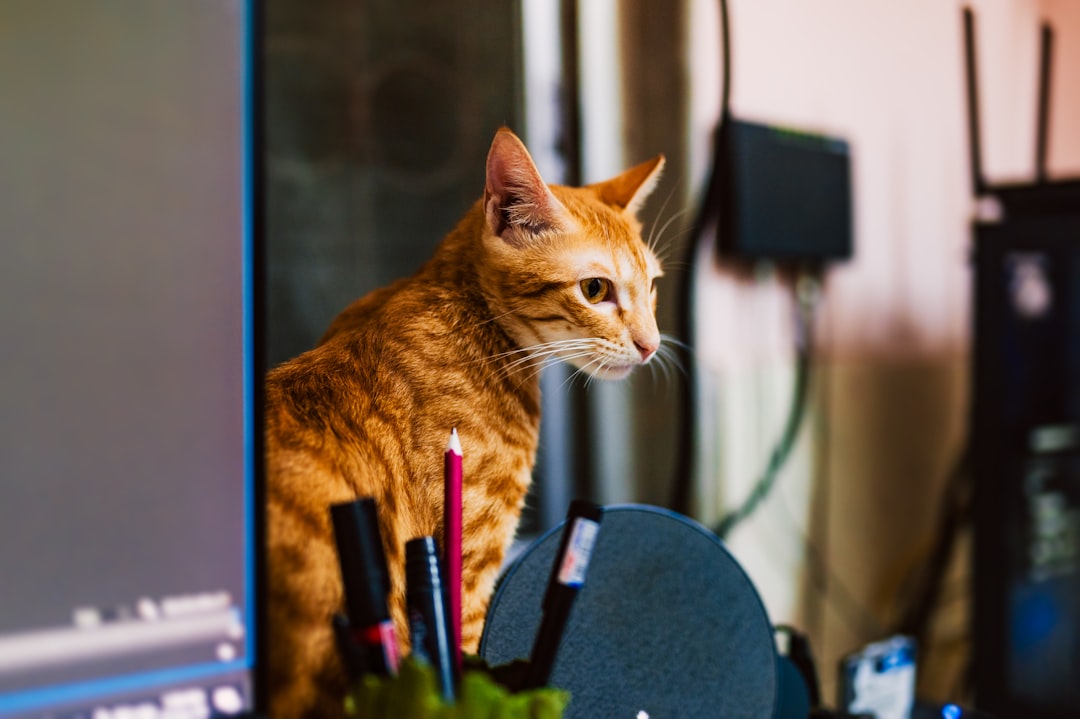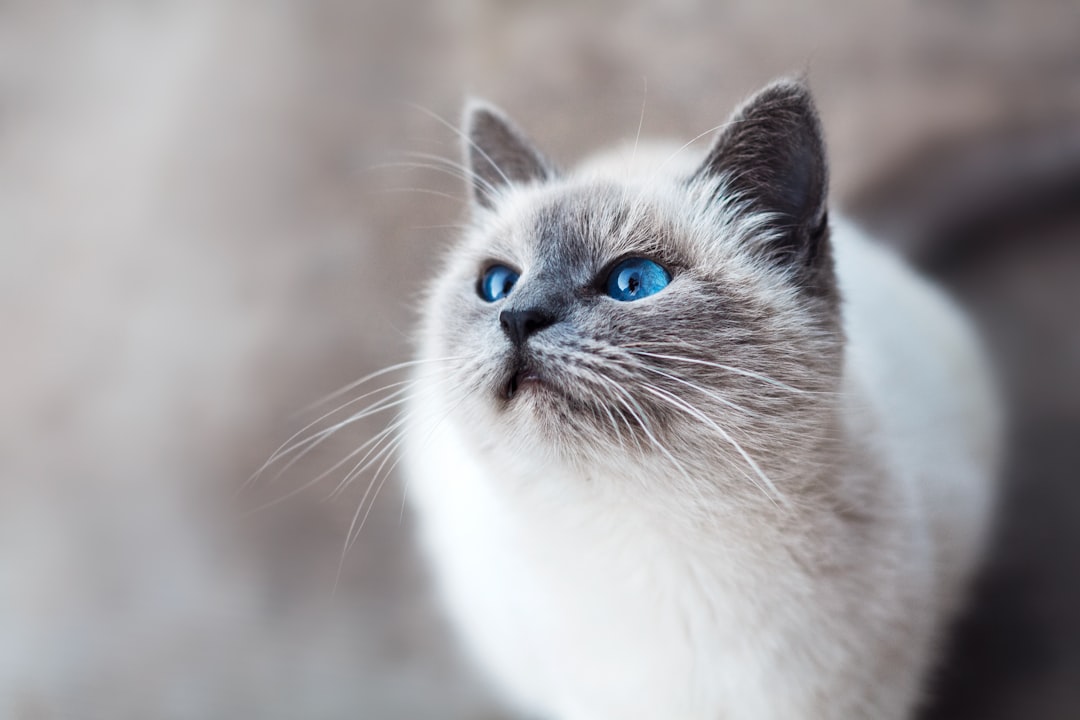Have you ever wondered how big cats react in the presence of house cats? Understanding feline behavior is key to this fascinating topic and can reveal a lot about how domestic cats interact with each other and their wild counterparts. In this blog post, we delve into cat socialization and behavior, the hierarchy of feline social behavior, instinctual predator-prey dynamics, and more to help you better understand how cats relate to one another. Read on to gain insightful knowledge about the complexity of feline behavior!

Cat Socialization and Behavior
Cats are fascinating creatures with a complex social behavior that can sometimes be misunderstood. Whether it’s domestic cats or their wild relatives, big cats, their behavior and interactions with each other can be influenced by factors like instinct, territory, hierarchy, and communication. Here are some insights into feline behavior and socialization.
How Domestic Cats View Each Other
Cats that grow up together and share a living space tend to get along well. However, cats that are introduced later in life may not get along as smoothly. They may hiss, growl, or even fight with each other, especially if they are not properly socialized. In many cases, cats need to establish a clear hierarchy to avoid conflicts.How Big Cats View Domestic Cats
While big cat species, like lions and tigers, can be kept as pets in some parts of the world, they are not natural companions for domestic cats. Big cats are territorial, and they may view domestic cats as intruders. In some cases, big cats may even see domestic cats as potential prey.Feline Social Behavior: Hierarchy and Communication
In both domestic and wild cats, hierarchy is important for maintaining social order. For example, in a group of feral cats, one dominant cat may be in charge of hunting and sharing food with the others. Communication is also key to feline socialization. Domestic cats can communicate through meows, purrs, and body language. Wild cats use a variety of vocalizations, like roars and growls, to communicate with each other.Understanding Wild Cat Behavior: Instincts and Predator-Prey Dynamics
Wild cats, like lions and tigers, have a complex instinctual behavior that is largely influenced by their role in the food chain. For example, lions in a pride have a specific hunting role, and they work together to bring down prey. Tigers, on the other hand, are solitary hunters that work alone. Understanding the predator-prey dynamics of big cats is important for their management in captivity, as well as in the wild.Territoriality in Felines: Scent Marking and Body Language
Cats of all sizes are territorial creatures that use scent marking to identify their territory. Domestic cats will rub their faces on objects in the home to mark their scent. Big cats use urine and other scents to mark their territory in the wild. Body language is also an important part of feline territoriality. A cat may arch its back as a sign of aggression or to make itself look larger when it feels threatened.Managing Cat Behavior Problems and Aggression
Behavior problems, like aggression, can be common in both domestic and wild cats. In domestic cats, behavior problems may arise due to factors like improper socialization, stress, or anxiety. In big cats, behavior problems may be related to territory, food, or mating. Managing cat behavior problems often involves identifying the underlying cause and addressing it through training or other methods.
In conclusion, understanding feline behavior and socialization is a complex topic that involves many factors. Whether it’s domestic cats or their wild relatives, big cats, proper socialization, communication, and management are key to maintaining a healthy and safe living environment for these fascinating creatures.
How Domestic Cats View each Other
Domestic cats are one of the most popular companions for pet lovers around the world. These felines have a complex social structure that is often misunderstood. Understanding how domestic cats view each other is essential for the proper socialization of these animals.
Feline Social Behavior: Hierarchy and Communication
Cats are social animals, but their social structure is based on hierarchy and communication. Domestic cats usually live in groups with a dominant cat and several subordinate cats. The dominant cat usually controls the food, water, and resources available to the group. Subordinate cats usually avoid the dominant cat and try to avoid conflict. However, when resources are scarce or when the dominant cat is sick or absent, subordinate cats may compete for resources.
Understanding Wild Cat Behavior: Instincts and Predator-Prey Dynamics
Understanding the behavior of domestic cats is easier when compared to their wild counterparts. However, domestic cats still share many instincts with their wild relatives. Wild cats are solitary and territorial animals that hunt for their food. Their social structure is based on the availability of resources and potential threats. Domestic cats retain many of these instincts, including the inclination to hunt, scratch, and bite.
Territoriality in Felines: Scent Marking and Body Language
Cats are territorial animals and use scent marking and body language to assert their dominance. Scent marking is one of the most important forms of communication among cats. Cats use their urine, feces, and pheromones to mark territories and to communicate with other cats. Body language is the other primary form of communication in cats that can indicate their mood. For example, a tail flicking or a tense posture indicates a cat’s potential threat.
Managing Cat Behavior Problems and Aggression
Cats may exhibit aggressive or inappropriate behavior for various reasons. When a cat exhibits such behavior, it is essential to understand the underlying cause and to address the situation appropriately. It is important to approach a cat with respect and consistency to avoid exacerbating the situation. Positive reinforcement training sessions can help redirect cats’ behavior and establish a strong, trusting relationship between the pet parent and the cat.
In conclusion, understanding how domestic cats view each other is essential to effective cat socialization. Domestic and wild cats share many of the same instincts and behaviors that result from their social structure and communication. As such, it is important to understand and respect cats’ behavior, communication, and social structure to live harmoniously with them.
How Big Cats View Domestic Cats
Big cats and domestic cats may appear to have a lot in common at first glance, but they are vastly different when it comes to behavior and interactions. Big cats, which include tigers, lions, leopards, jaguars, and cheetahs, are wild animals that have evolved to hunt and survive in their natural habitats. Domestic cats, on the other hand, are primarily kept as pets and have been bred for companionship rather than survival.
When it comes to how big cats view domestic cats, the answer is not very positively. Big cats are solitary hunters and prefer to avoid contact with other animals, especially those that are not prey. Domestic cats are not natural prey for big cats, but they are still seen as potential competitors or threats to their territory. In the wild, big cats will actively avoid other big cats unless they are mating or have established a cohesive hierarchy and social structure.
In the case of domestic cats, big cats may perceive them as a nuisance invading their territory. The scent and presence of a domestic cat can trigger the territorial instincts of big cats and result in aggressive behavior. Additionally, the physical size difference between domestic and big cats can make the former seem like prey animals, causing the big cats to attempt to hunt them.
Overall, it is not recommended to introduce domestic cats to big cats, whether in a captive or wild setting. Even if the big cats do not exhibit aggressive behavior towards the cats, the stress and anxiety caused by the proximity to these natural predators can be harmful to the domestic cats’ well-being. It is important to respect the inherent differences in behavior and biology between big cats and domestic cats to ensure their safety and happiness.
To summarize:
- Big cats view domestic cats as potential competitors or threats to their territory
- Domestic cats may trigger the territorial instincts of big cats, resulting in aggression
- Domestic cats are not natural prey for big cats, but the size difference can cause the big cats to view them as such
- Introducing domestic cats to big cats is not recommended for their safety and well-being
Feline Social Behavior: Hierarchy and Communication
Feline social behavior is a complex and fascinating topic that has been studied extensively by animal behaviorists and researchers. One of the most intriguing aspects of feline socialization is the establishment of a hierarchy among cats and the unique ways that they communicate with each other.
House cats are social animals that typically live in groups or colonies. In the wild, cats are solitary hunters, but they have adapted to living in close proximity to other cats in order to access food and shelter. Domestic cats have developed sophisticated methods of communication to establish and maintain social bonds within their groups.
When it comes to hierarchy, cat socialization is based on a ranking system that determines who has access to resources like food, water, and comfortable sleeping areas. The most dominant cat will typically have access to the best resources, followed by the other cats in descending order of dominance.
Communication is an essential aspect of feline socialization. Cats communicate through a variety of methods, including body language, scent marking, and vocalizations. Cats use facial expressions, ear and tail positioning, and posture to signal their intentions and feelings. For example, a cat with an arched back and puffed-out fur is communicating fear or aggression, while a cat with a relaxed body and half-closed eyes is signaling contentment.
Scent marking is another important tool used by cats to communicate with each other. Cats have scent glands in their cheeks, feet, and tail, and they use these glands to mark their territory and establish their dominance. Cats will rub their cheeks against objects, scratch surfaces, and spray urine to leave their scent behind.
Vocalizations are yet another way that cats communicate. Cats can make a variety of sounds, including meows, hisses, purrs, and growls, each of which has a different meaning. For example, a cat may meow to solicit food or attention, while a growl is a warning signal that the cat is feeling threatened or aggressive.
When it comes to interactions between big cats and domestic cats, the dynamics can be quite different. Big cats, such as lions and tigers, are wild animals that are not socialized to live with humans or domestic cats. They have their own unique hierarchies and methods of communication, and they may view domestic cats as prey or competition. It is important to be cautious when introducing domestic cats to big cats, and to never attempt to keep them together in the same space.
Understanding the nuances of feline social behavior is essential for anyone who wants to live harmoniously with cats. By observing their body language, scent marking, and vocalizations, it is possible to understand their intentions and emotions. With patience and understanding, it is possible to build strong bonds with these intelligent and fascinating animals.
Understanding Wild Cat Behavior: Instincts and Predator-Prey Dynamics
Wild cats, such as lions, tigers, and leopards, are fascinating creatures that embody true power and majesty. Their behavior, instincts, and interactions with other animals, including domestic cats, are a testament to their formidable nature.
Wild cats have evolved over millions of years to become some of the most efficient predators on the planet. They have keen senses, powerful muscles, and sharp teeth and claws that allow them to hunt prey both large and small. Their instinctual behaviors are inherent, and, despite being tamed or raised in captivity, they cannot be entirely eliminated.
When it comes to interactions between big cats and house cats, it all boils down to predator-prey dynamics. A domestic cat is a natural prey for a wild cat, although this scenario is unlikely to occur in most cases. A well-fed and cared for domestic cat has much less appeal than a wild animal, which is more likely to challenge a predator’s survival instincts.
However, wild cats might still view domestic cats as a potential competitor or threat, especially if they sense any form of territoriality. House cats could ignite wild cats’ hunting instincts, chasing them away from the area. Consequently, it is essential to ensure that domestic cats do not wander into habitats where wild cats live or frequent.
Understanding wild cats’ behavior also helps to shed some light on how they react to different stimuli. Unlike domestic cats, wild cats follow a strict hierarchy, with the strongest and most dominant felines occupying the top spot. They use various forms of communication, such as scent marking, body language, and vocalizations, to establish their social presence and boundaries.
Additionally, wild cats have an ingrained sense of territoriality and often use scent markers, such as urine and feces, to demarcate their territories. This behavior ensures that their hunting grounds are not hindered by intruders and that they maintain a reliable food source.
In conclusion, understanding wild cat behavior and their predator-prey dynamics is critical in ensuring that both domestic and wild cats coexist harmoniously. Careful monitoring of cats living near wild habitats and the use of humane deterrents can help reduce interactions between these animals. Knowing how big cats react to house cats is not only interesting but also important to maintaining balance in our ecosystem.
Territoriality in Felines: Scent Marking and Body Language
Feline territoriality is a complex behavioral pattern that involves scent marking, body language, and vocalizations. The need for territorial control is an innate trait in all cats, whether wild or domestic. Understanding territoriality and its manifestation is crucial in managing cat behavior problems, such as aggression, stress, and anxiety.
Scent marking is a common behavior among felines, and it plays a significant role in territoriality. Cats use different scent marking methods to establish and control their territory. Some common methods include urine spraying, facial rubbing, and scratching. Urine spraying is a way for the cat to mark its territory and communicate its presence to other cats. Facial rubbing is a form of communication that cats use to mark their home and objects with their scent, indicating ownership. Scratching is not only a form of exercise and claw maintenance for cats, but it also leaves a visual and scent mark, indicating ownership of the area.
Body language is another significant aspect of territoriality in cats. Cats use body language to communicate their intentions and assert dominance over other cats. Some common body language cues used by cats to control their territory include arched backs, bristling tails, and flattened ears. Cats that wish to demonstrate their dominance may approach other cats head-on while maintaining eye contact. On the other hand, cats that want to avoid confrontations may attempt to look as small as possible by tucking their limbs and lowering their bodies.
Understanding feline territoriality can help cat owners manage behavior problems and aggression. Providing cats with sufficient space and resources, such as litter boxes, food, and water bowls, can mitigate territorial conflicts. Owners can also help alleviate territorial stress and anxiety by providing a variety of scratching posts and toys, which can help redirect destructive behavior and claw maintenance.
In conclusion, territoriality is a vital aspect of feline social behavior and plays a significant role in managing cat behavior problems. Understanding scent marking, body language, and vocalizations are crucial in understanding feline territoriality, and providing cats with adequate space and resources can help mitigate territorial conflicts and reduce stress and anxiety.
Managing Cat Behavior Problems and Aggression
Cats may be known for their independent nature and affectionate personalities, but aggressive behavior can pose a threat to both feline and human safety. If you have a cat that displays aggressive behavior, the following tips can help you manage the problem:
Understand the cause of aggression: Aggressive behavior can have various underlying causes such as fear, territorial issues, pain or discomfort, or unresolved stress. Identifying the root cause can help you develop a strategy to manage your cat’s behavior.
Avoid punishment: Punishing a cat for aggressive behavior will only instill more fear or anxiety. Instead, focus on positive reinforcement with treats and affection when your cat displays positive behavior.
Provide outlets for their energy: Playtime and exercise can help release pent up energy and tension. Interactive toys, such as a laser pointer or feather wand, can be used to facilitate engaging playtime.
Create a calm environment: Cats are known to be sensitive to their surroundings, so providing a stress-free, safe, and comfortable environment is important. This can include providing hiding spots, perches, toys, and places to scratch.
Consult a veterinarian or behaviorist: If your cat’s behavior continues to be aggressive or sudden, it’s recommended to consult a veterinarian or animal behaviorist. They can help diagnose underlying medical conditions or develop a personalized plan to manage your cat’s behavior.
When it comes to managing the behavior of big cats towards house cats, it’s important to ensure the safety of both animals. It’s recommended to keep them separate unless there is a clear demonstration of acceptance from both parties. Even then, it’s best to supervise any interactions and provide separate spaces for the animals to retreat to if needed.
Managing cat behavior problems can be a challenging and complex process, but understanding the underlying causes and implementing positive reinforcement can help create a safe and happy environment for both feline and human.













